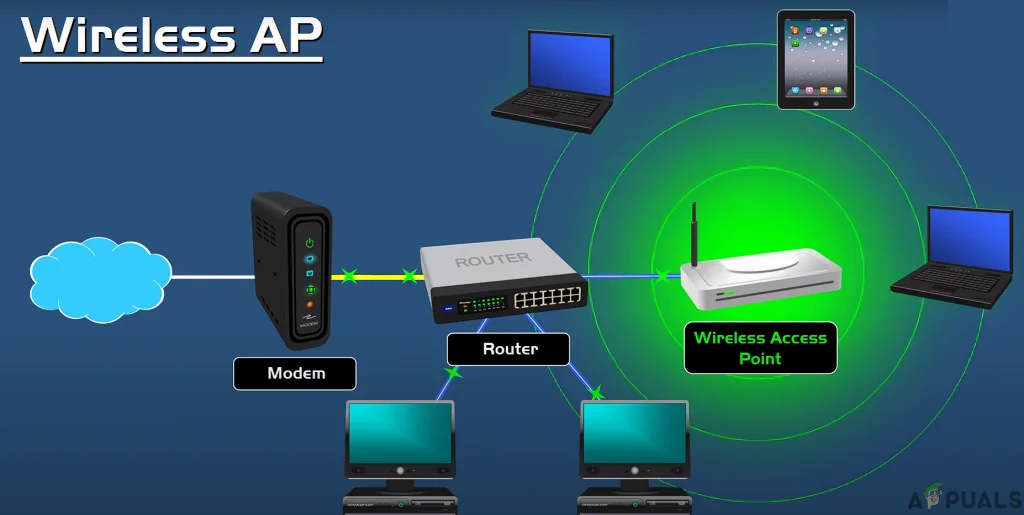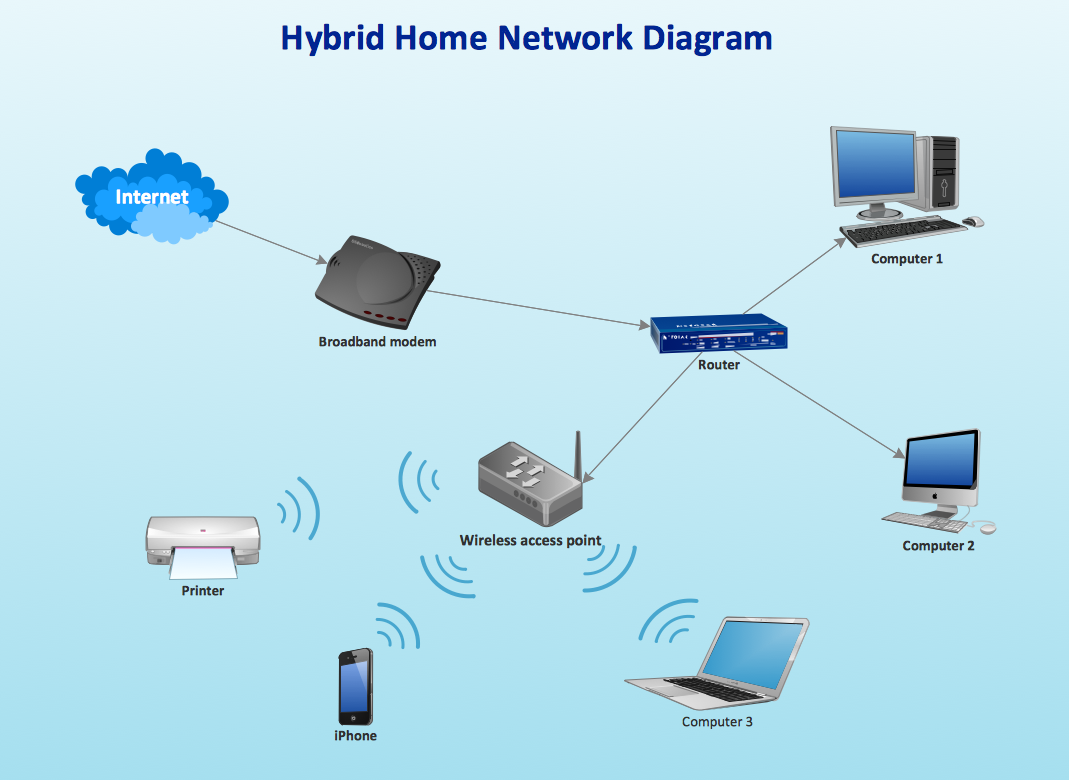What Is a Wireless Access Point and How Does It Work?
In an increasingly digital world where connectivity is paramount, the function of a wireless access point (WAP) has become integral to how we engage with technology and the internet. At its core, a wireless access point serves as a bridge between wired networks and wireless devices, enabling seamless connectivity for users on the go. As homes, businesses, and public spaces evolve, understanding what a wireless access point is and how it works not only empowers users to enhance their online experience but also informs decisions about the technologies that shape our communication landscape.
Wireless access points are often compared to routers, but while they have overlapping roles, they serve distinct purposes. A router directs traffic between devices on a network and the internet, whereas a WAP primarily extends that network’s reach, providing Wi-Fi capability to devices that might otherwise be out of range. This differentiation becomes crucial in environments such as large office buildings, schools, and sprawling campuses where a single router cannot adequately cover the area. With multiple access points strategically placed, organizations can create a robust and stable wireless network that facilitates productivity and connectivity.
To comprehend the importance of WAPs, one must also consider the growth of wireless devices. From smartphones and tablets to IoT (Internet of Things) devices, our dependency on wireless connectivity continues to rise. This ever-increasing demand for network access has put pressure on traditional network infrastructures, leading to the widespread adoption of wireless access points in both domestic and commercial settings. Additionally, with advancements in technology, modern access points are equipped with features such as MU-MIMO (Multi-User, Multiple Input, Multiple Output) and beamforming, further amplifying their ability to handle numerous connections simultaneously without compromising performance.
As we delve deeper into this article, we will explore the functionality of wireless access points, their various types, and tips for optimizing their use in different environments. By the end, readers will have a comprehensive understanding of what a wireless access point is and how it operates, gaining insights that are pivotal in today’s hyper-connected world.
Understanding the Functionality of Wireless Access Points
Wireless access points work by receiving and transmitting data over radio waves, creating a direct link between the wired network infrastructure and wireless devices. Essentially, they act as a bridge, translating the data from the wired side of the network into a wireless format that devices can access. The magic lies in their ability to send and receive signals through antennas, which can vary in design and capability depending on the model of the access point. Many WAPs feature multiple antennas that allow them to transmit data across various channels simultaneously, ensuring efficient use of bandwidth while minimizing interference.
When a device, such as a smartphone or laptop, wants to connect to the internet, it searches for available wireless networks. Once it detects the signal emitted by a wireless access point, the device connects to it, allowing it to communicate with the network. This interaction involves several protocols and security measures to ensure that the connection is stable and secure. For instance, WPA3 (Wi-Fi Protected Access 3) is one of the latest security protocols that encrypts data, safeguarding it against unauthorized access. Such features are vital, especially in public spaces where many users connect to the same network.
The configuration of wireless access points can also hugely influence network performance. Advanced settings, such as channel selection and power output, can help minimize interference from other nearby networks or devices. By understanding how these settings impact functionality, users can optimize their access points for maximum efficiency. Network administrators often employ tools for monitoring performance and managing traffic loads, ensuring that multiple users can connect without experiencing lag or interruptions. This management capability proves essential in both large enterprises and home networks where multiple devices may be simultaneously accessing bandwidth-heavy applications.
The Different Types of Wireless Access Points
Wireless access points come in various types designed to meet specific needs and environments. Understanding the types of wireless access points is crucial for anyone looking to enhance their network infrastructure. One of the most common types is the standalone access point, which operates independently and connects directly to the router. This type is suitable for smaller networks or homes where only a few devices need to connect wirelessly. Conversely, standalone access points can struggle to manage larger networks due to limited features and capacity.
On the other hand, controller-based access points are often found in enterprise solutions. These access points are managed through a centralized controller, enabling them to function as a cohesive unit. This integration allows for easier management, firmware updates, and the implementation of security policies across all connected devices. It is particularly beneficial in environments like universities or large corporations, where thousands of devices may need access to the network consistently. The centralized management provided by this type of access point enhances security and efficiency and simplifies troubleshooting.
Lastly, there are cloud-managed access points, which leverage cloud technology for easier management and scalability. Through web-based interfaces, users can configure settings, monitor performance, and adjust security features from anywhere — a game-changing option for system administrators who may manage multiple locations. These access points are particularly appealing for businesses looking to scale quickly without the burden of extensive on-premises infrastructure. Each type of access point has its advantages and scenarios where it shines, making understanding these differences pivotal for effective networking.
Best Practices for Optimizing Wireless Access Points
Optimizing a wireless access point is crucial in ensuring reliable and fast connectivity. One of the first steps in optimization is the strategic placement of the access point. Ideally, these devices should be located in a central position within the area that requires coverage. Placing the access point near walls or corners can obstruct signals, leading to weak spots within the network. Elevating the access point can help overcome physical barriers and provide a more expansive coverage range, ensuring that users experience the best connectivity possible.
Another vital aspect of optimization is utilizing the correct wireless band. Most modern access points operate on both the 2.4 GHz and 5 GHz bands. While 2.4 GHz offers a broader coverage range, the 5 GHz band provides faster speeds. Depending on the usage scenario, switching between bands can enhance performance. For instance, devices that require high-speed connections, such as gaming consoles or streaming devices, can benefit from connecting to the 5 GHz band, while devices used for simple browsing can easily connect via the 2.4 GHz band.
Moreover, regularly updating the firmware on wireless access points can significantly improve functionality and security. Manufacturers often release firmware updates to fix bugs, enhance performance, and address potential security vulnerabilities. Ensuring devices run the latest firmware keeps the network secure and can lead to improved overall performance. Implementing measures like network segmentation and enabling guest networks can also help manage traffic efficiently, thus providing a better experience for all users connected to the network.
Conclusion
In conclusion, understanding what a wireless access point is and how it works is essential in today’s interconnected world. These devices serve as pivotal components in establishing robust wireless networks that accommodate our growing reliance on technology. From enhancing connectivity in homes to powering large organizations, wireless access points help bridge the gap between wired infrastructure and wireless devices, allowing users to connect seamlessly to the internet.
As we explored in this article, a wireless access point functions by communicating through radio waves, translating data for wireless devices while maintaining secure connections. The various types of access points allow users to customize their networks based on size, need, and popularity, while optimization strategies ensure that users enjoy the best possible experience. These best practices, such as strategic placement and utilizing dual-band technology, can significantly enhance network performance, ultimately leading to more agile and reliable connectivity.
The significance of wireless access points continues to grow as businesses and individuals seek efficient solutions to meet their increasing connectivity demands. Knowledge of their functions, types, and best practices not only empowers users but also enhances their overall digital experience. Whether you’re aiming to improve your home network or tackle the complexities of a corporate environment, the insights gained here will be invaluable. As we move forward in a world where the digital landscape continues to evolve, staying informed about technologies like wireless access points will be critical, enabling us to navigate this journey effectively and with confidence.




